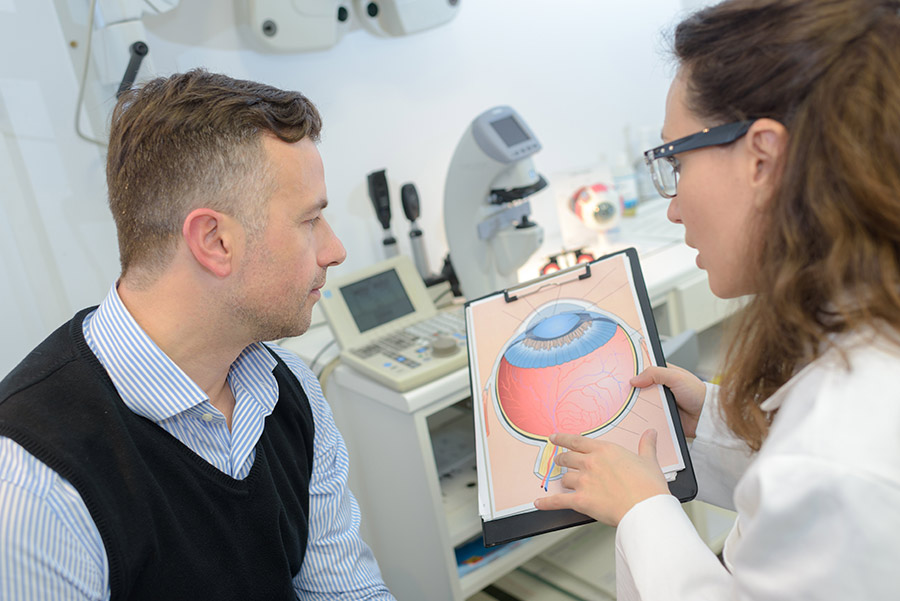What Does Legal Blindness Mean and How is it Treated?

More than 10 million people in the United States are legally blind, but despite this staggering number, there’s a lot of misconception about what defines legal blindness. Being legally blind doesn’t refer to a total loss of vision, but it does mean that a person has less than 10% vision.
Two Types of Legal Blindness
There are different types of blindness. People who have normal eyesight, but a restricted or reduced field of vision are deemed legally blind. A person with a clear vision can see objects in their peripheral vision; what we call looking from the corner of the eye. With a restricted field of view, a person can only see what is directly in their line of sight. Limited vision makes ordinary tasks including crossing a road or driving a car extremely dangerous and challenging.
The most common type of blindness is known as low vision. This type of vision is best understood when compared to normal eyesight. Someone who can see has typically 20/20 vision or can meet a number very near that when wearing glasses or contacts. Even with corrective eyewear, a legally blind person has only 20/200 vision. This means that a person with low vision can see at 20 feet what a person with a healthy vision can see at 200 feet.
Legal blindness has nothing to do with being nearsighted vs. farsighted, which can easily be remedied by treatment or corrective lenses. Most causes of legal blindness are irreversible once the damage occurs, but sometimes the condition is preventable.
Five Leading Causes of Blindness and Impaired Vision
- Glaucoma is the leading cause of preventable blindness in the US. A fluid called the aqueous humor of the eye does not drain fast enough, or the eye produces too much of it with the result that pressure builds up inside the eye. The pressure distorts and eventually destroys the optic nerve, leading to blind spots in the patient’s vision. Suffers can prevent permanent damage leading to legal blindness through regular eye exams to check eye pressure and by treatment with eye drops.
- An injury can cause cataracts, but most often it’s a natural part of the aging of the eye. Surgical removal of the cataract and a lens replacement can usually restore the patient’s vision.
- Diabetic retinopathy is a disorder of retinal blood vessels caused by diabetes. If detected early enough, laser surgery can repair damage to the blood vessels before a permanent loss of vision occurs. Early detection of diabetes and proper management of the condition can prevent eye damage.
- Age-related macular degeneration results in the loss of central vision in the affected eye. The process can’t be prevented, arrested, or cured but an optometrist can help the patient to make the most of their remaining vision.
- Atrophy of the optic nerve occurs as a result of toxic damage such as methanol poisoning, an infection, or metabolic or nutritional disorders. The patient is treated to control the cause of the disease, and sometimes cortisone can relieve the symptoms.
Help to Prevent Blindness and Finding Help
Many causes of legal blindness are preventable through regular eye appointments to check your eye health. A comprehensive eye exam allows an optometrist to diagnose a condition which might lead to blindness, and can even help to find early signs of illness in other parts of your body.
Eyelux Optometry is a San Diego optometrist dedicated to preventing blindness and assisting legally blind patients. Healthcare advances and new technology can change the life of patients with impaired vision. Book an appointment today and experience the freedom of the best vision possible.

